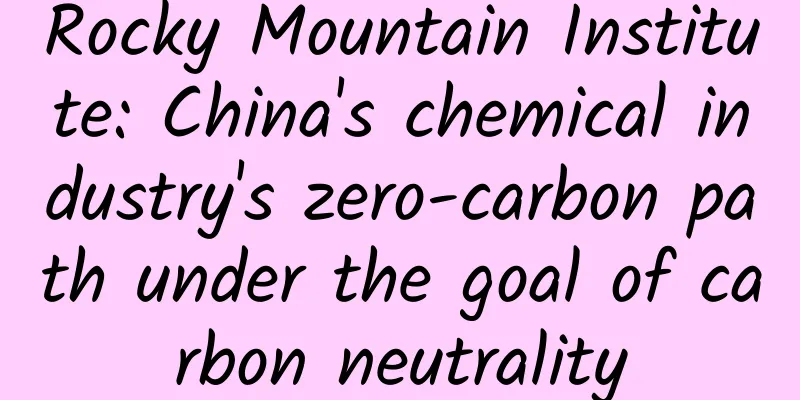Rocky Mountain Institute: China's chemical industry's zero-carbon path under the goal of carbon neutrality

|
The chemical industry is broadly defined as the petrochemical and chemical industry, that is, the oil raw material industry chain and the non-oil raw material industry chain. The chemical industry belongs to process industry III in the industrial production sector, that is, using natural resources as raw materials, through physical and chemical reactions, to produce general bulk products for non-retail circulation fields as raw materials for product industries. The upstream raw materials of chemical products mainly include natural resources such as coal, oil, natural gas, crude salt, quartz stone, etc. Due to the resource characteristics of China being rich in coal but lacking in oil and gas, the coal chemical industry accounts for a larger proportion than other countries. The chemical industry has many products, including bulk chemicals and fine chemicals. Bulk chemicals have a large production scale and a low profit level. They are at the upstream of the chemical industry chain, including olefins, aromatics, etc., while fine chemicals are deeply processed from bulk chemicals as raw materials. They are smaller in scale but have higher added value and are used in pesticides, coatings, etc. China is the world's largest producer of chemical products, and its international influence is gradually expanding. According to data from the European Chemical Industry Council CEFIC, China's chemical product output value in 2019 was RMB 10.4 trillion (EUR 1.48 trillion), accounting for 40.6% of the world's total, and sales are expected to reach 48.6% of global sales in 2030. China's chemical industry has maintained rapid growth in recent years, with an average annual growth rate of 5.2% in industrial added value from 2015 to 2020. China is also the world's largest consumer of chemical products, and its consumption is growing rapidly. According to data from the German Chemical Industry Association VCI, China's demand for chemical products in 2019 was equivalent to RMB 10.7 trillion (1.54 trillion euros), accounting for 41.6% of the global total consumption, an increase of 3 percentage points from 39.1% in 20184. China also dominates the global market share of sub-products. According to IHSMarkit data, China's consumption of synthetic ammonia, methanol and ethylene accounts for approximately 30%, 60% and 20% of the global total consumption, respectively5. Among them, ethylene consumption is the apparent consumption of ethylene monomer. If downstream products of the ethylene industry chain are included, the proportion can be further increased. For example, China's global consumption of low-density polyethylene (LDPE) accounts for 34%. The PDF version will be shared on 199IT Knowledge Planet, just scan the QR code below! |
Recommend
Xiaohongshu product analysis and optimization plan
1. Product Disassembly and Development History 1.1...
The two essences of marketing promotion: content and channels!
I have been engaged in marketing promotion for so...
Geely is on the list of the world's most valuable cars, and it is not far from surpassing Ford
Recently, Brand Finance, a well-known British bra...
Understand ASO in 3 minutes! Those who are new to operations and promotions, please look here!
This article is 1,300 words long and is recommend...
5 strategies for membership marketing of knowledge payment APP
As people's copyright awareness gradually inc...
Breaking the world record! China's "artificial sun" has achieved a major breakthrough!
The "artificial sun", also known as the...
Can the eyes of a snake glow? See the amazing light of the snake-eye stone →
On a dark and windy night, snakes danced wildly o...
The most complete! 40+ common terms that new media operators must know!
With the rise of various major accounts, the new ...
How can Sharp save itself despite huge losses in LCD business?
A year later, huge losses hit Japanese home appli...
Analysis of practical cases of information flow in 2019!
Information flow advertising is called performanc...
How to get the new coronavirus vaccine? Here is the authoritative guide
The Chinese Center for Disease Control and Preven...
Tongjiang SEO Training: Learn about e-commerce website promotion and generate income for yourself!
Since the emergence of shopping payment software ...
What are the most effective APP promotion channels at present?
What exactly is APP promotion for? Is it a channe...
Google will abandon RenderScript in Android 12 and switch to Vulkan
Google announced today that with the launch of An...









